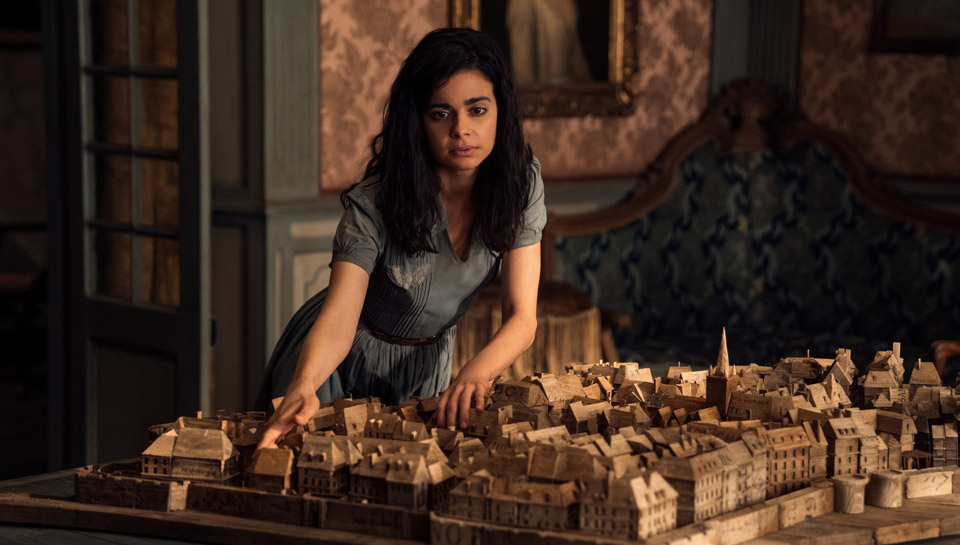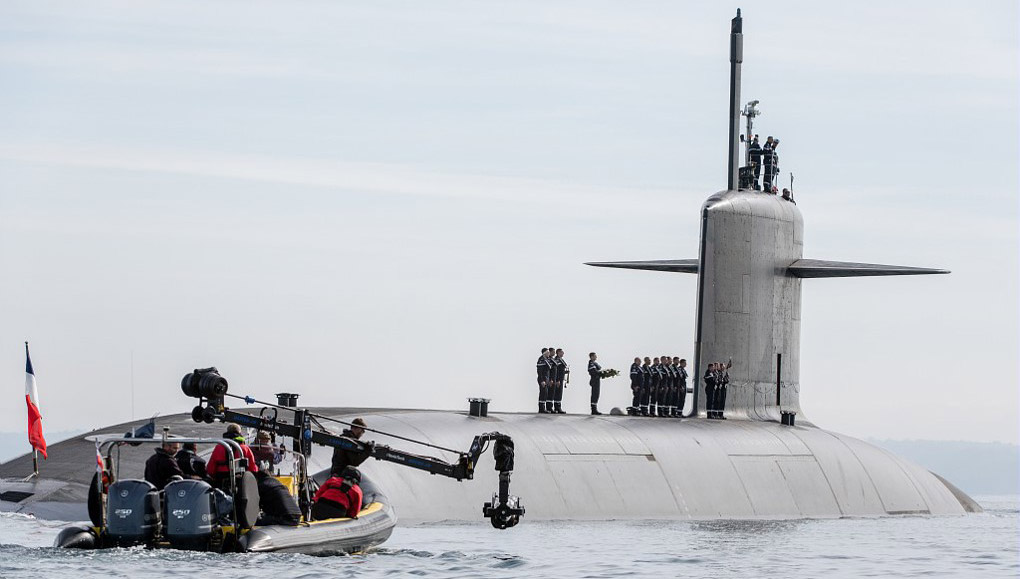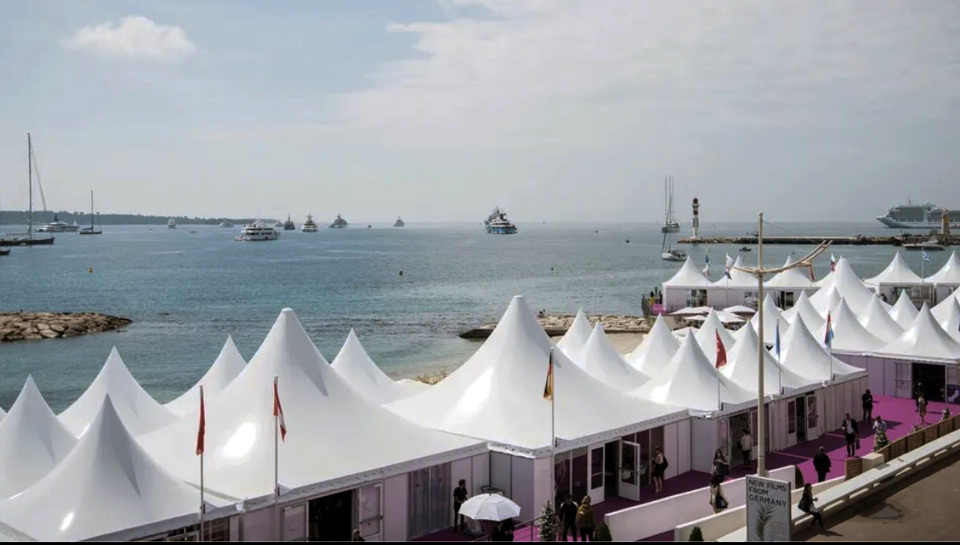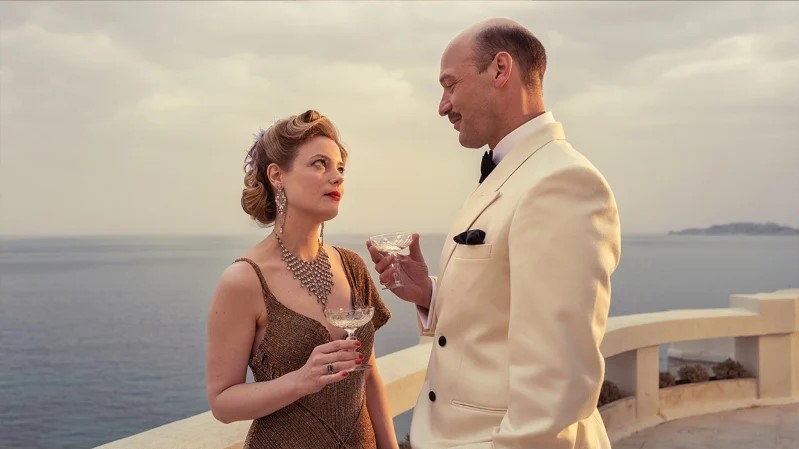Adapted from Anthony Doerr's novel (published in France in 2015), All the Light We Cannot See is a four-part mini-series that tells the story of two children, one of whom is blind, in Saint-Malo during the Second World War. The adaptation which is directed by Shawn Levy (Stranger Things), was shot in a studio in Budapest (Hungary). However the Saint-Malo of the 1940s was recreated in July 2022 in Villefranche-de-Rouergue, Aveyron. How did this commune in south-west France (where André Malraux filmed scenes from L'Espoir in 1938-1939) come to be transformed into a Breton town? That's what Marin Rosenstiehl, head of the film commission at Occitanie films, the organisation that enabled filming to take place in the region, explains to us.
How did the filming of All the Light We Cannot See come about in Villefranche-de-Rouergue?
Working with international productions like All the Light We Cannot See is a much more complex operation than with a domestic production. Sometimes foreign productions approach us on their own initiative, but most of the time they are in contact with the team at the CNC who deal with these matters. It all came down to the sets. The series was obviously predestined to be filmed in Saint-Malo, since a large part of the story takes place there, and there had been location scouting in the region. But the town suffered extensive damage during the Second World War and no longer suited the needs of the series. It was at this point, a year or two before filming was due to start, that we were contacted: All the regional film commissions in France had received a request to look for a '40s-style village with a church. We sent a selection of locations that matched the specifications, with old and recent photos. As it happens, the head designer of the series, Simon Elliott, is English and had come to stay on holiday not far from here in the Tarn, near Villefranche-de-Rouergue. It's a very pretty town with a lovely outdoor market, and he realised that the main square resembled what Saint-Malo might have been like at the time, especially in terms of the colour of the stone.
What are the challenges of filming on this scale?
We had to privatise the entire city centre for the shoot, and had to work closely with the local residents in order to do so. The town council was extremely helpful and committed to the logistical set-up: a shoot like this completely transforms the life of a small town. Villefranche has the biggest market in the whole region, held every Saturday, which had to be moved. But it's great to be able to work with teams with such huge resources and an Anglo-Saxon working model. For example, there is a stage manager who is solely responsible for the sets. His job is to get to know the owners of each shop and each house to make it easier to shoot. Entire streets were reconstructed, with period shops, but the sets also had to be created after the bombings. The aim was to recreate and reinvent a city. The buildings had to collapse, the tanks had to burn... In such cases, involving the local population and residents is crucial. Without that, despite the beauty of the location, it wouldn't have worked. 400 local extras were hired. It was a very powerful moment for them as we were re-enacting the liberation of France. That's why working upstream with the local people - here we're talking about six to eight months before filming - is essential. We're in a country where there are a certain number of rules, and we have an administration that requires us to respect certain constraints and obligations. It takes time, but it allows us to get a whole town involved in a project so that it can be experienced as an event for the local population rather than as something demanding. It's not just an artistic event, it's also an economic one, generating huge spin-offs for the whole town. To be honest, filming on this scale is quite exceptional. Having such a large crew means booking all the hotels within a 100 kilometre radius for three weeks. So we had to find all the available accommodation!
What does Occitanie Films do?
There are two main activities, both of which are fundamental. The first is to promote the region: this involves identifying all the possible locations for filming, by listing public and private sites. These may be individual houses, villages, unique locations, etc. This will feed into locations.filmfrance.net, the database of film sets on the CNC website. The second is to identify, list and support all the temporary workers, technicians and actors in the region, i.e. around 1,500 technicians and 800 professional actors. These are people who work on feature films, short films, series, single productions, etc. They range from young people just out of school to seasoned heads of post, who can work on both national and international productions. These two files are constantly updated. They are a very important part of the region's appeal. “Beautiful scenery" is not enough. These days, people choose to set up in a region because of its talent and skills. Between 30 and 35 films are made in this region every year, so over the years it has gained a lot of exposure. New French productions arrive much more spontaneously in Occitanie because they have seen a film made here, and because they know the people who worked on it. It's a virtuous circle. At a time when studio shooting with LED screens, post-production and special effects is being promoted, the Americans also understand that shooting on location is still very appealing. They have been very satisfied with the filming of the series: as a thank you, the first two episodes will be shown as a preview in Villefranche on Monday 30 October.
Occitanie films also includes two other facilities, Ciné 32 and Gindou Cinéma...
Don't forget that Occitanie is almost as big as Switzerland, and bigger than Ireland! It's a vast and varied territory, with sea, mountains, rugged countryside, scrubland... While Occitanie Films is the regional film agency, looking after domestic and international productions, two local structures are also at work. Ciné 32, for example, looks after the Gers, Haute-Garonne, Hautes-Pyrénées and Ariège departments and Gindou Cinéma looks after the Lot and Tarn-et-Garonne departments. These local players are essential, as they can unearth an unlikely location that we hadn't imagined or hadn't thought of.
What are the most notable current projects?
Last year, the series Mister Spade starring Clive Owen (which benefited from the CNC's Tax Rebate for International Production was shot in Occitanie. It was a great adventure, since director Scott Franck (The Queen's Gambit) and his scriptwriter Tom Fontana had simply written into their script that the plot would take place in some village in Aveyron. Shooting took place in Bozouls for ten days, then in the Gard and Hérault departments. Olympe, une femme dans la Révolution, a French production co-directed by Julie Gayet about the life of the revolutionary feminist Olympe de Gouges who was a native of Montauban, is currently being filmed. It is set mainly in 18th-century Paris. And the town of Villefranche-de-Rouergue has once again been used to recreate the streets of the capital at that time.
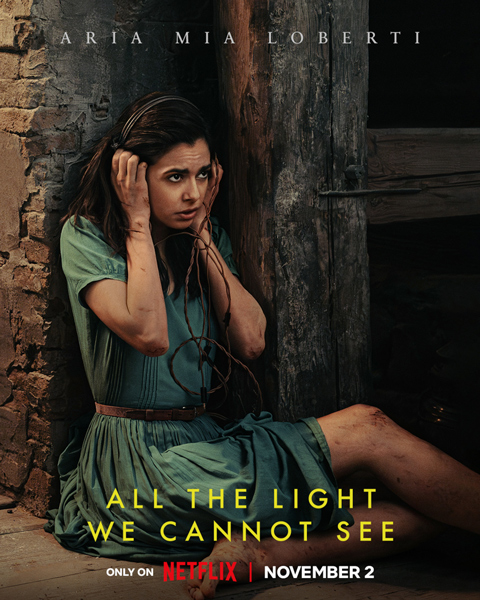
All the Light We Cannot See has benefited from the Tax Rebate for International Production (TRIP).
The four episodes of the series will be released on Netflix on 2 November.


